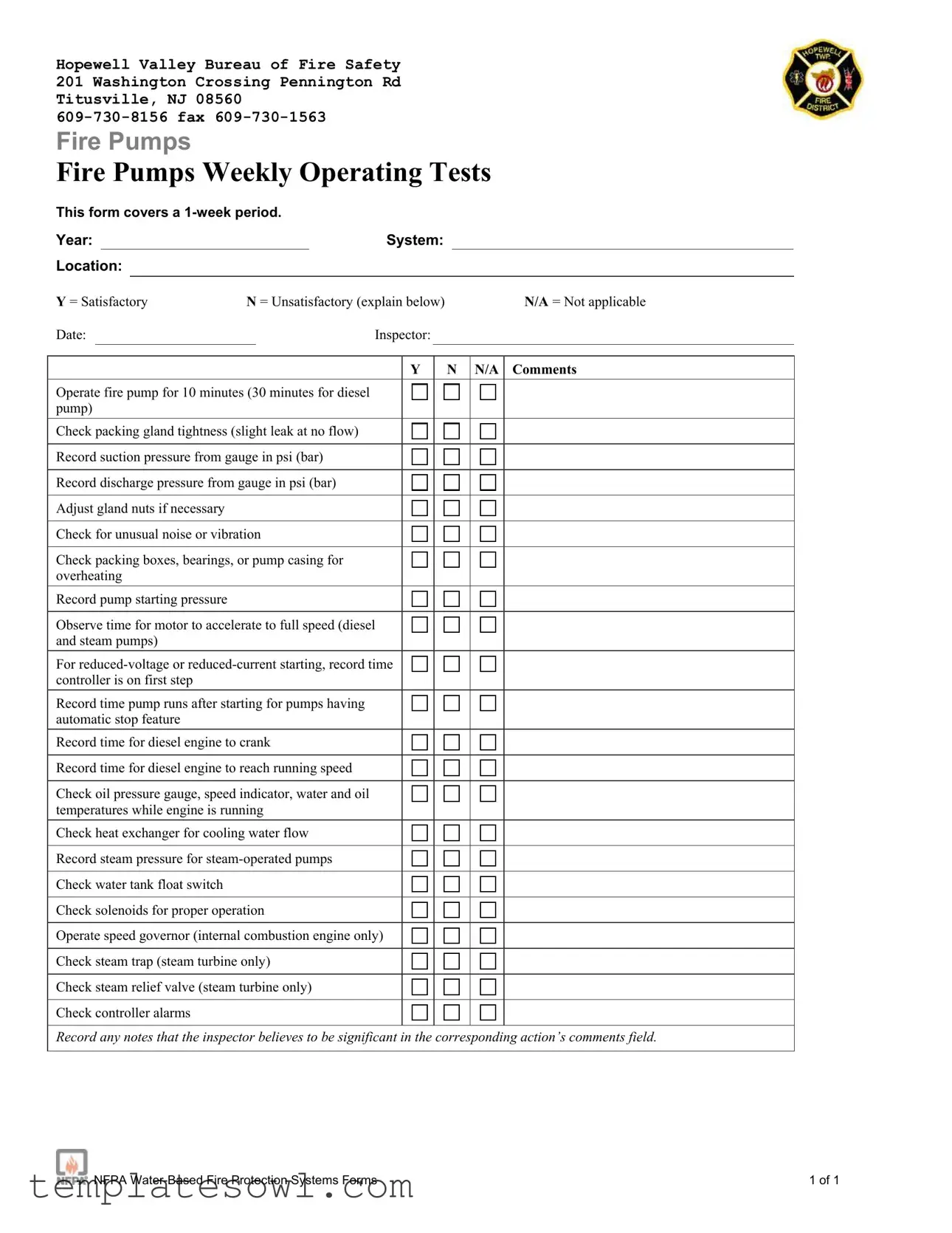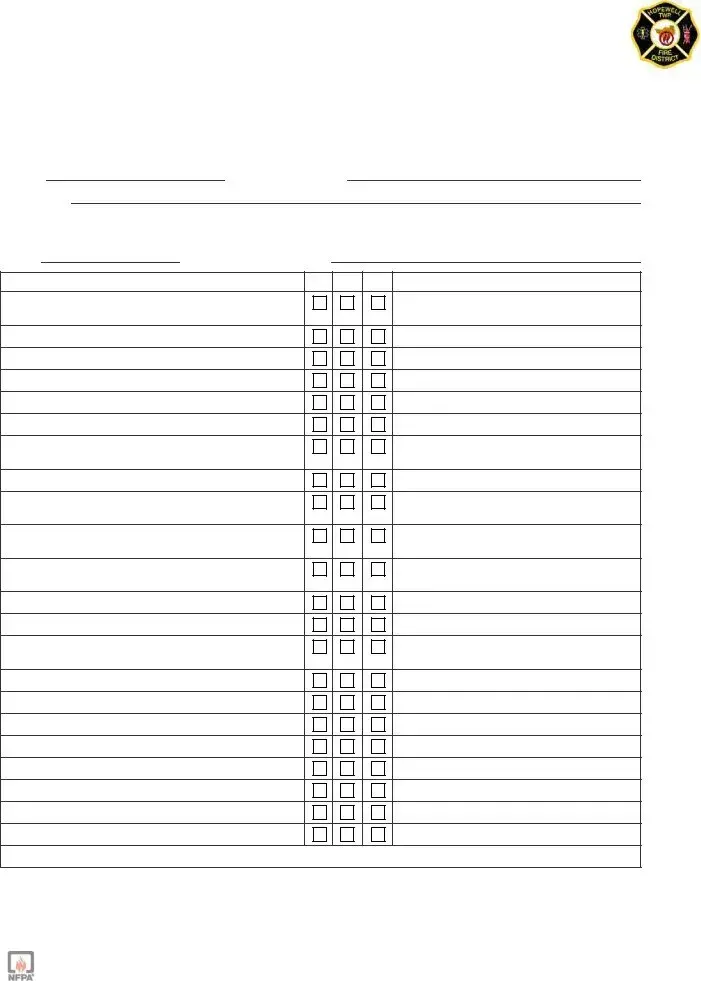Hopewell Valley Bureau of Fire Safety 201 Washington Crossing Pennington Rd Titusville, NJ 08560
609-730-8156 fax 609-730-1563
Fire Pumps
Fire Pumps Weekly Operating Tests
This form covers a 1-week period.
Year:System:
Location:
Y = Satisfactory |
N = Unsatisfactory (explain below) |
N/A = Not applicable |
Date:Inspector:
YN N/A Comments
Operate fire pump for 10 minutes (30 minutes for diesel pump)
Check packing gland tightness (slight leak at no flow)
Record suction pressure from gauge in psi (bar)
Record discharge pressure from gauge in psi (bar)
Adjust gland nuts if necessary
Check for unusual noise or vibration
Check packing boxes, bearings, or pump casing for overheating
Record pump starting pressure
Observe time for motor to accelerate to full speed (diesel and steam pumps)
For reduced-voltage or reduced-current starting, record time controller is on first step
Record time pump runs after starting for pumps having automatic stop feature
Record time for diesel engine to crank
Record time for diesel engine to reach running speed
Check oil pressure gauge, speed indicator, water and oil temperatures while engine is running
Check heat exchanger for cooling water flow
Record steam pressure for steam-operated pumps
Check water tank float switch
Check solenoids for proper operation
Operate speed governor (internal combustion engine only)
Check steam trap (steam turbine only)
Check steam relief valve (steam turbine only)
Check controller alarms
Record any notes that the inspector believes to be significant in the corresponding action’s comments field.
NFPA Water-Based Fire Protection Systems Forms |
1 of 1 |

